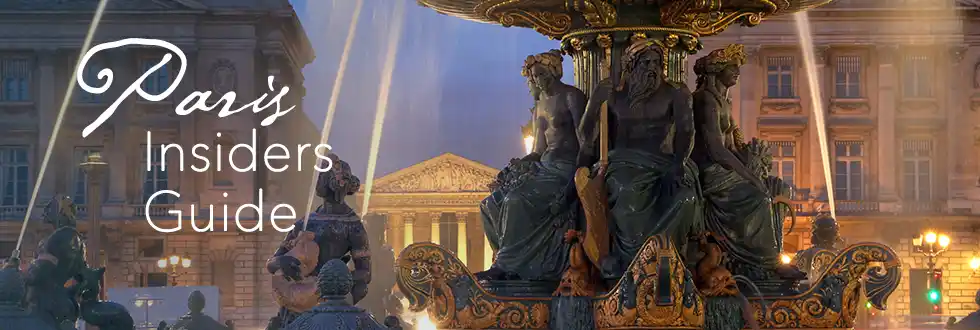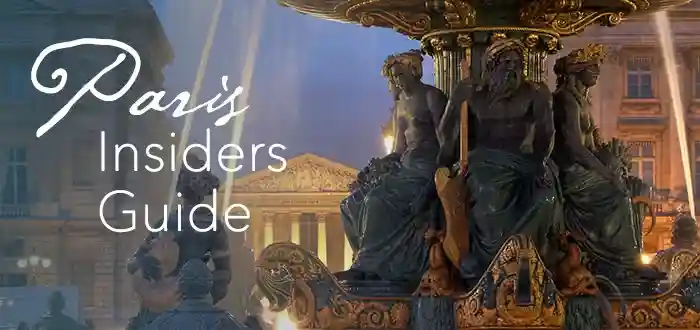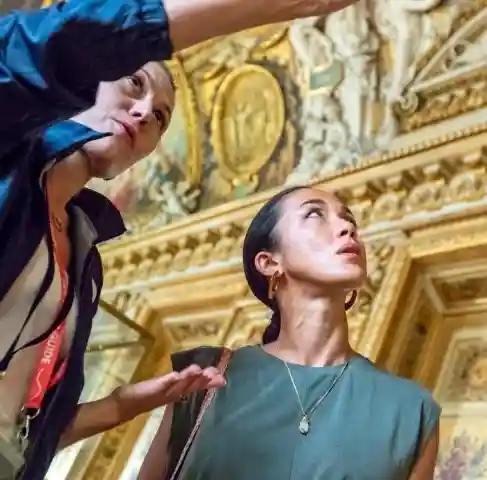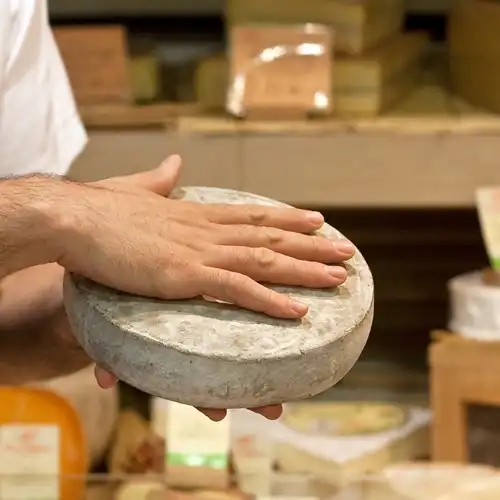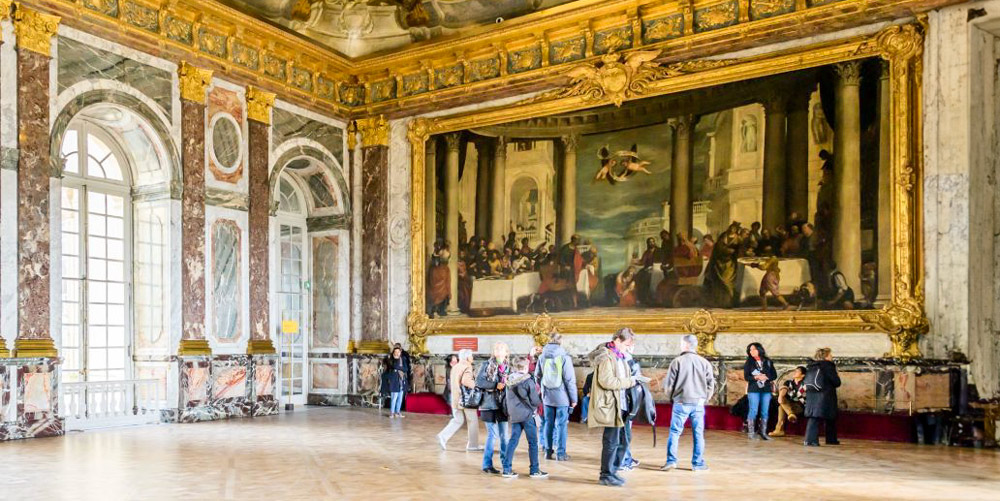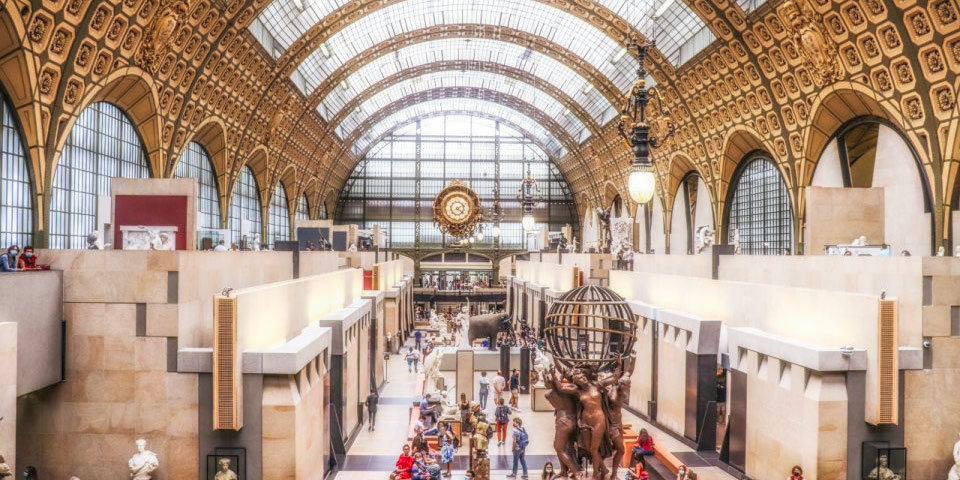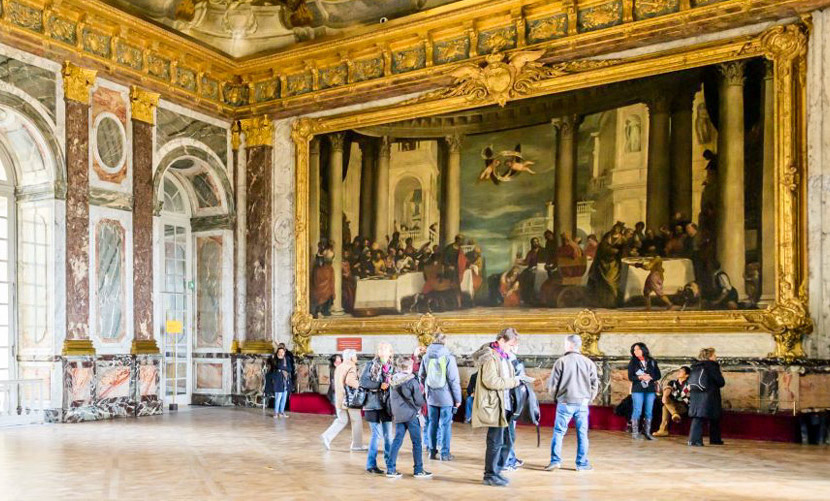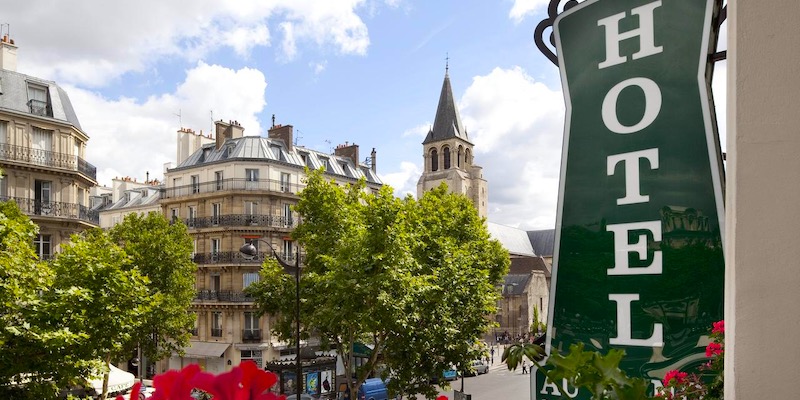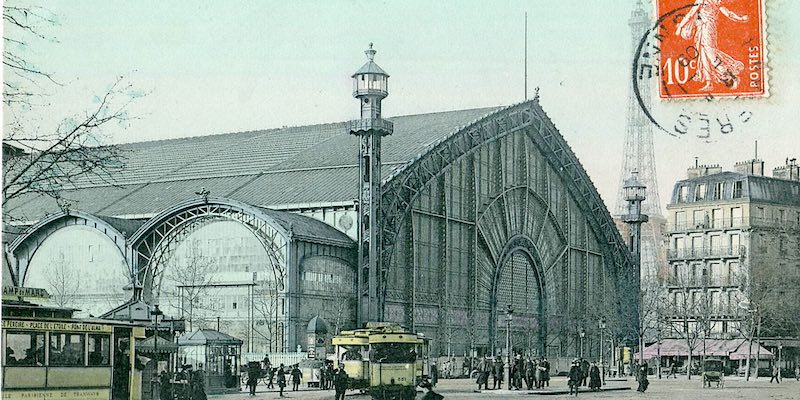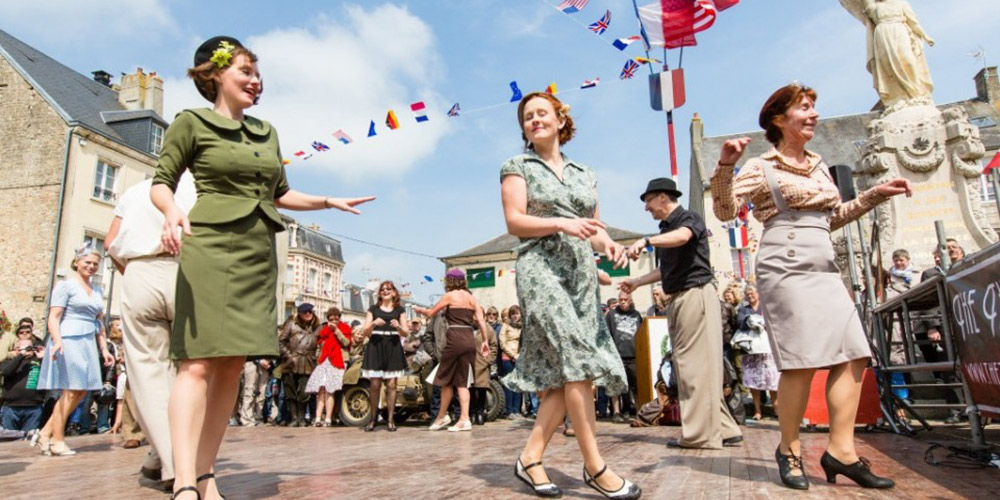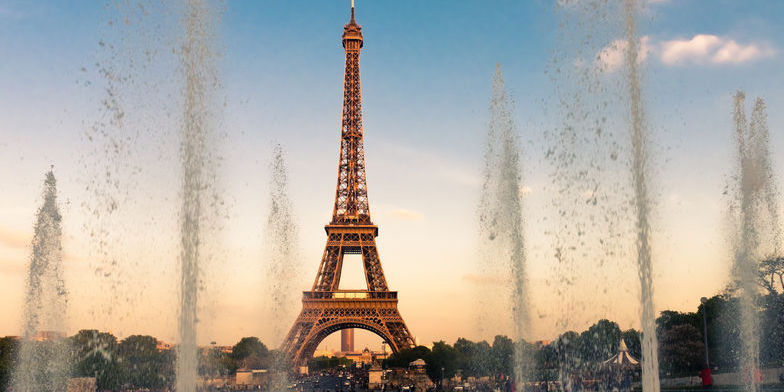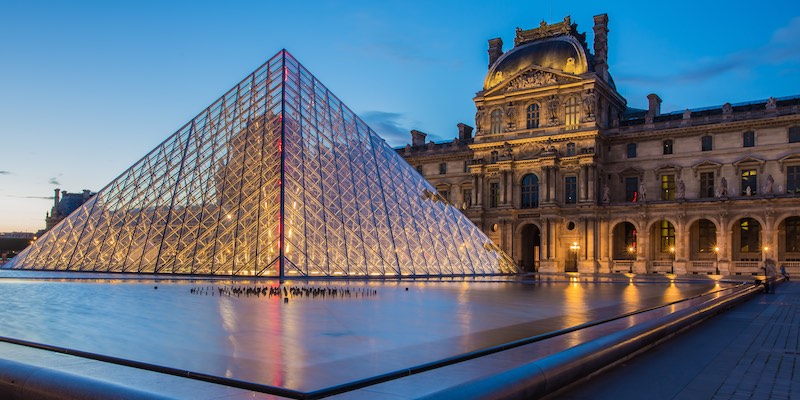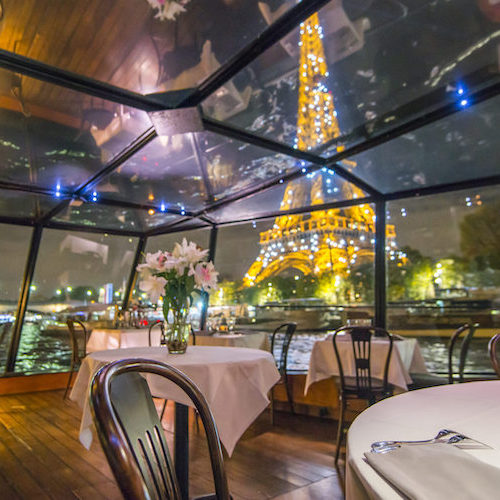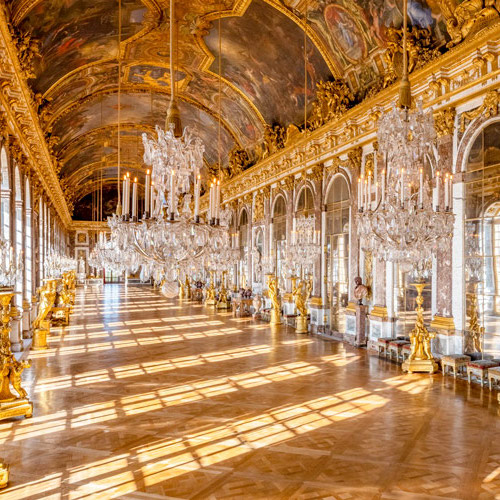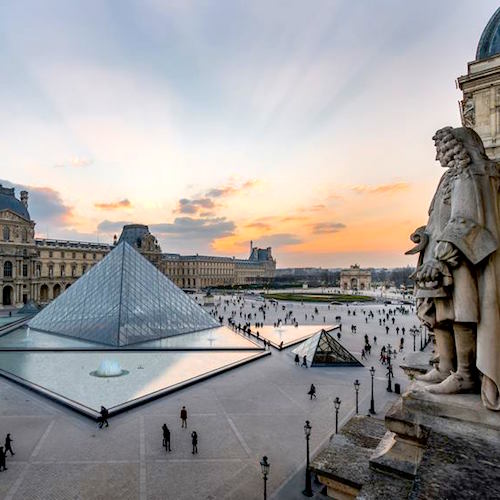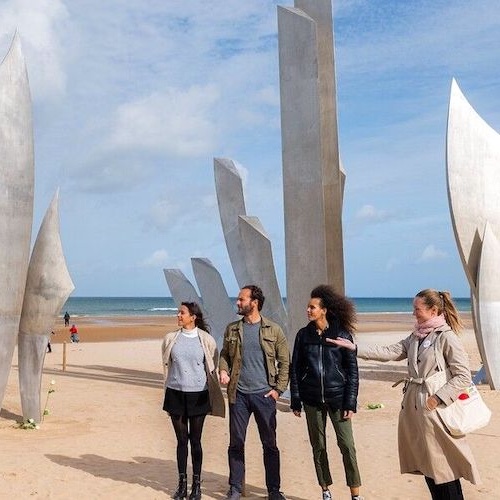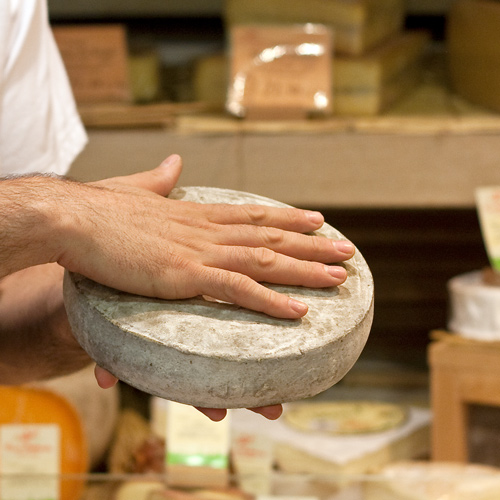Paris Facts for Curious Travelers – History, Trivia & Savoir-Faire
Before you board that Paris-bound plane, we've got a few Paris facts to set the stage and sharpen your savoir-faire. Sure, you already know about tipping in France, navigating the Metro, and our ride the Metro, and imparted our top travel tips. But what about the oddball tidbits, the centuries-old quirks, and the lingering ghost of Napoleon? That's where we come in. Here, we dig up the offbeat, the brain-tickling bits of Paris that even regular guidebooks can't be bothered with.
These aren't just bits of trivia — they're the kind of offbeat knowledge that makes you look clever over cocktails. You'll find oddities, curiosities, and the kind of details that long-haul Francophiles quietly collect. Consider it your cheat sheet to charming conversation and a slightly smug sense of orientation.
![]()
Discover What's On When You're Here...
• January... |
• February... |
• March... |
• April... |
• May... |
• June... |
• July... |
• August... |
• September... |
• October... |
• November... |
• December... |
Discover What's On When You're Here
• January...
|
• February... |
• March... |
|---|---|---|
• April... |
• May... |
• June... |
• July... |
• August... |
• September... |
• October... |
• November... |
• December... |
Napoleon's Paris
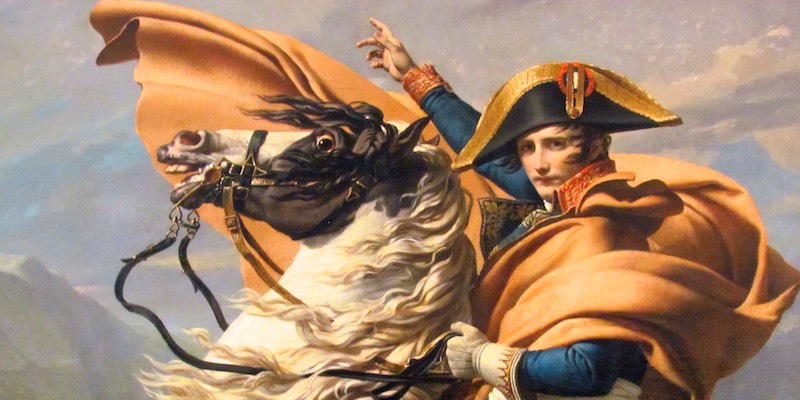 French painter David's portrait of Napoleon on horseback
French painter David's portrait of Napoleon on horseback
Walk in the footsteps of France's first emperor, Napoleon Bonaparte. He was a reformer, a builder, and a man who liked things done his way. You already know about the grand arches and triumphant columns, but Napoleon also gave us Rue de Rivoli, completed the Louvre Museum courtyard, and commissioned the stately Église de la Madeleine. His vision shaped a version of Paris that still feels impressively intact.
Fun fact: While Napoleon had nothing to do with the city's sewers (that was Haussmann, decades later), he did make sure Paris had more access to clean water. His legacy lingers in corners of the city that visitors often miss. Look for imperial "N" monograms still etched onto buildings and bridges — like breadcrumb trails from a man who liked to leave a mark.
![]()
|
Trade Paris bustle for royal grandeur on a guided Versailles tour. Skip the lines, wander the gardens, and peek inside Marie Antoinette’s private estate. History never looked this good. |
|
Trade Paris bustle for royal grandeur on a guided Versailles tour. Skip the lines, wander the gardens, and peek inside Marie Antoinette’s private estate. History never looked this good. |
Ernest Hemingway's Paris
 Photo of the cafe Les Deux Magots as it looked in Hemingway's day, photo Les Deux Magots
Photo of the cafe Les Deux Magots as it looked in Hemingway's day, photo Les Deux Magots
The 20th-century American writer Ernest Hemingway will forever be linked to Paris — at least in our minds. He was part of that Lost Generation of ex-pats who lived and worked in Paris in the 1920s, when the city and the writers made an indelible impression on each other. Today, Hemingway's most-read book is his memoir of Paris that was published after his death — A Moveable Feast. Let's go on a virtual visit of the places in Paris where Hemingway lived, worked, drank, and loved.
What makes Hemingway's story even better is how walkable it still is — from his modest flat near the Jardin du Luxembourg to his favorite bars in Saint-Germain. He once “borrowed” books from Shakespeare and Company and even fished in the Seine. His Paris years read like one long, colorful anecdote — and retracing them is one of our favorite ways to spend a literary afternoon.
![]()
|
Paris Dinner Cruises on the Seine Dine in style as you glide past the Eiffel Tower, Notre-Dame, and the Louvre on a magical Seine River cruise. Gourmet food, champagne, and Paris lit up at night – it’s unforgettable. |
|
Paris Dinner Cruises on the Seine Dine in style as you glide past the Eiffel Tower, Notre-Dame, and the Louvre on a magical Seine River cruise. Gourmet food, champagne, and Paris lit up at night – it’s unforgettable. |
The 5 Top Highlights of Medieval Paris
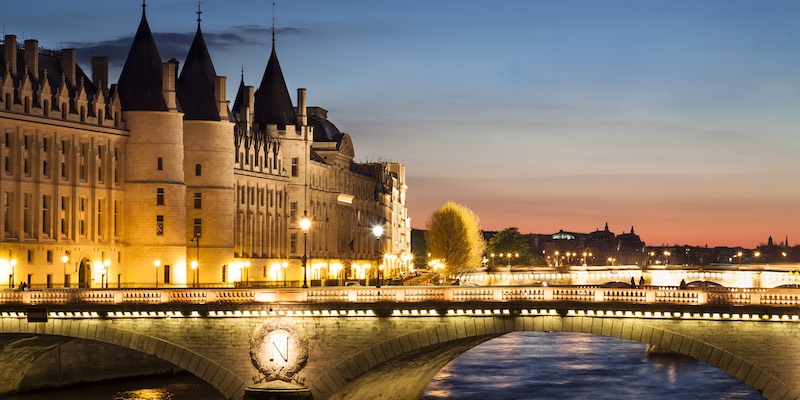 The Conciergerie and Napoleonic bridge at night
The Conciergerie and Napoleonic bridge at night
There are only a few medieval buildings still standing in Paris. Centuries of wars, revolutions, and urban planning have scrubbed most of the original architecture from view. But dig a little deeper — or just walk along the Seine — and you'll find places like Notre-Dame Cathedral, La Sainte-Chapelle, and the ancient towers on Île de la Cité still standing proud, stained-glass windows and all.
Here's something to casually drop over a bistro dinner: the oldest house in Paris (Nicolas Flamel's place!) still stands — and yes, he was real. If you want more medieval marvels, head to the Cluny Museum, where Gallo-Roman ruins rub elbows with Gothic tapestries. It's a compact crash course in a thousand years of history, all within a few winding blocks.
The Top Versailles Tours From Paris
The Top Versailles Tour From Paris
Paris Facts – Henry IV's Paris
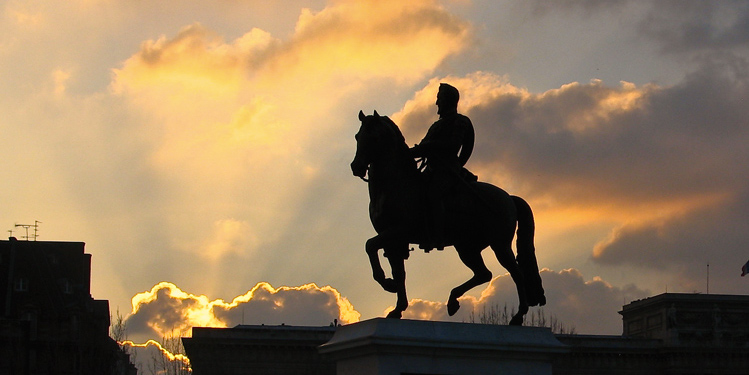 Equestrian statue of Henry IV against the evening sky, photo by Mark Craft
Equestrian statue of Henry IV against the evening sky, photo by Mark Craft
He was called "Good King Henry" and he did a lot to improve Paris during his 20-year reign (1589-1610). Henry IV managed to halt religious strife and warfare — and then embarked on an ambitious plan to make Paris a better place to live, to pull it out of its medieval mire. Let's take a short stroll through the Paris of the late 16th century to visit 5 highlights of Henry IV's work that still serve Paris well today.
Among the lasting legacies of Henry's reign are some of the city's most elegant early-modern projects: Place Dauphine, Pont Neuf, and the grand Hôtel de Sully. His approach was practical but stylish — no surprise he remains a favorite among royalty nerds and urbanists alike. These aren't just dry historical footnotes; they're Paris facts hiding in plain sight, visible to anyone with half an eye and five minutes to spare.
Paris Islands in the Seine
 A map from 1550 shows a Paris island that no longer exists
A map from 1550 shows a Paris island that no longer exists
The Seine once cut through Paris in ways that no longer appear on modern maps. Islands were formed, filled, merged, and erased as the city expanded and tightened its riverbanks. What survives are subtle clues rather than landmarks, and you usually pass them without knowing it.
Learning where the Paris islands once sat adds another layer to every walk along the river. Bridge crossings, embankments, and long straight quays suddenly hint at earlier shorelines and forgotten channels. The river still explains the city — you just have to know how to read it.
Pont Neuf – The Original Paris Power Move
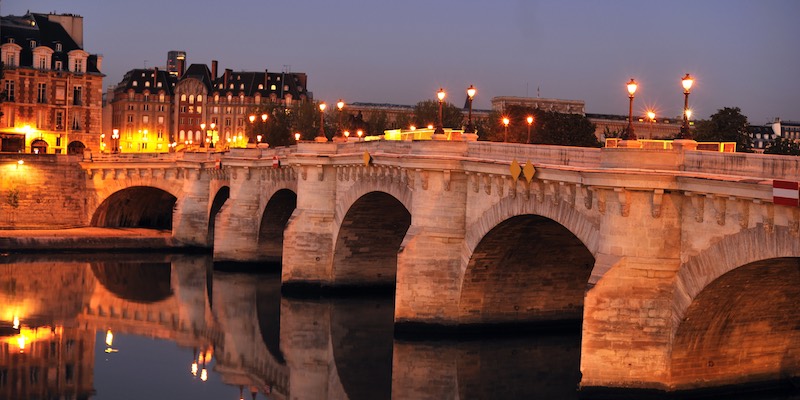 Pont Neuf, the "new bridge" that's the oldest in Paris
Pont Neuf, the "new bridge" that's the oldest in Paris
Talking about Henry IV plays brings to mind the bridge he completed. Before Pont Neuf, bridges in Paris were rickety, fire-prone, and covered in buildings. Then came this broad sweep of limestone, built to last and meant for people. It was a revolutionary leap in urban design — no clutter, plenty of space, and a royal statue for good measure.
Pont Neuf Paris connects the Right and Left Banks via Île de la Cité, right at the heart of the city. Read our guide to learn why it's more than just a pretty crossing — it's a piece of Parisian history that still sees daily foot traffic and the occasional bottle of wine.
![]()
|
Skip the lines and join an expert-led tour through the Musée d'Orsay — home to Van Gogh, Degas, and Monet. It’s the ultimate walk through 19th-century art in a grand old train station. |
|
Skip the lines and join an expert-led tour through the Musée d'Orsay — home to Van Gogh, Degas, and Monet. It’s the ultimate walk through 19th-century art in a grand old train station. |
Louis XIV's Paris
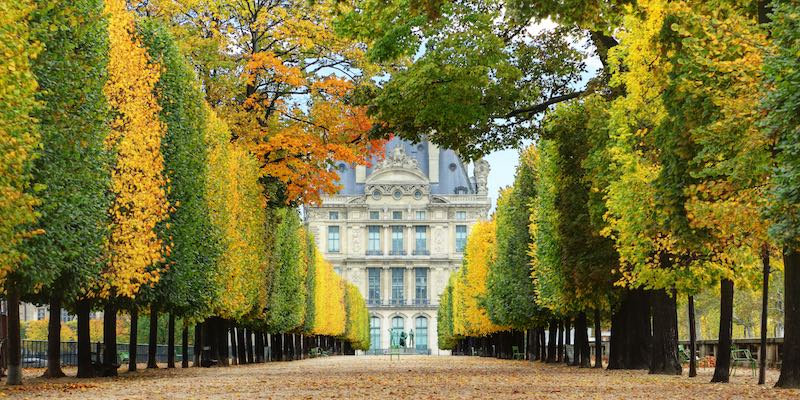 An alley of trees at the Louvre in autumn colors
An alley of trees at the Louvre in autumn colors
Let us now skip ahead a couple of generations to Henry IV's grandson, Louis XIV, AKA The Sun King, the longest-reigning monarch in European history. Although Louis might be most well known for moving the royal court to Versailles and abandoning Paris and the Louvre, his time on the throne left lasting impressions on Paris, including a compete redesign of the Jardin des Tuileries.
The Sun King may have packed up his wigs and mirrors for Versailles, but he didn't ghost Paris entirely. His reign oversaw the construction of the Hôtel des Invalides, improvements to the Seine embankments, and the grand axis stretching from the Louvre to what would become the Champs-Élysées,. These aren't just dusty anecdotes — they're solid Paris facts you can still visit and stroll through today.
8 Superlative Bridges Of Paris
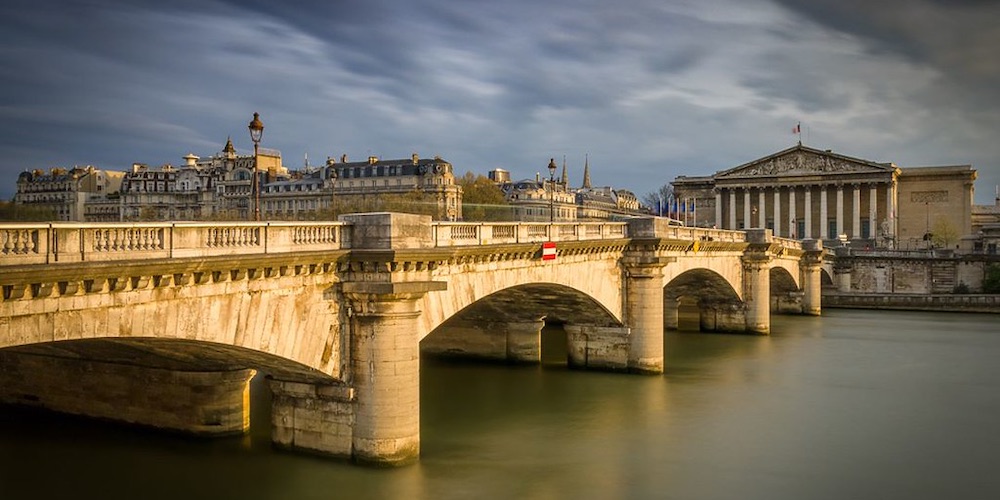 Pont de la Concorde in evening light, photo Flickr by Frederic Monin
Pont de la Concorde in evening light, photo Flickr by Frederic Monin
As we may have mentioned (once or twice) we love the bridges of Paris. In a city both defined and separated by its river, the bridges are critical links that pull the sections of the city together.
There are thirty-seven bridges spanning the waterway, spread over the thirteen kilometers the Seine travels through Paris. Inspired by an article from the City of Paris that awarded certain of the bridges superlative titles like The Most Sumptuous and The Most Graceful and The Most Poetic, here's our presentation of the "mostest" of the bridges of Paris.
![]()
|
Browse our hand-picked Paris hotel deals with real-time discounts of up to 20%. Stay in the Marais, Saint Germain, the Latin Quarter, the Left Bank near the Eiffel Tower… every arrondissement is on the list. |
|
Browse our hand-picked Paris hotel deals with real-time discounts of up to 20%. Stay in the Marais, Saint Germain, the Latin Quarter, the Left Bank near the Eiffel Tower… every arrondissement is on the list. |
Marie Antoinette's Paris
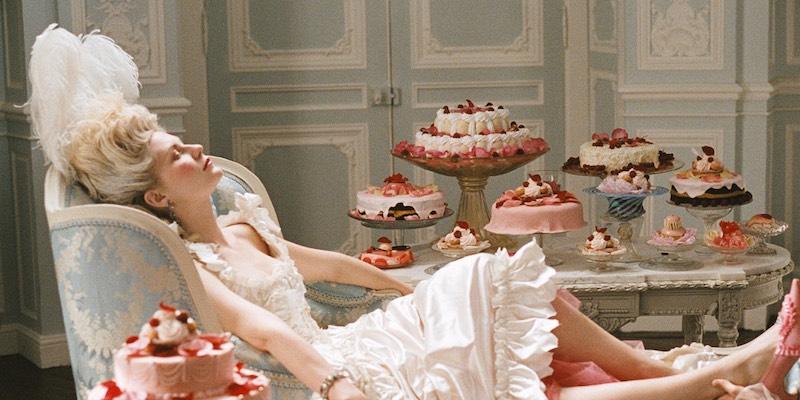 Kirstin Dunst as the title character in Sofia Coppola's "Marie Antoinette"
Kirstin Dunst as the title character in Sofia Coppola's "Marie Antoinette"
Marie Antoinette, the unluckiest queen in history, was married to Louis XVI, who was Louis XIV's great-grandson. Although she lived most of her reign at Versailles, she and Louis spent their last years in Paris, at the Palais des Tuileries in the gardens of the same name.
Her Paris story ends not with glittering salons but with prison walls and a cart ride to the guillotine. From the Temple prison to the Conciergerie, the queen's final steps are marked by haunting landmarks and heavy silence. Few Paris facts feel quite as personal — or as chilling. Let's spend a day in Paris walking in M-A's footsteps and then visiting the poignant settings of her last days.
Paris Facts – Van Gogh's Paris
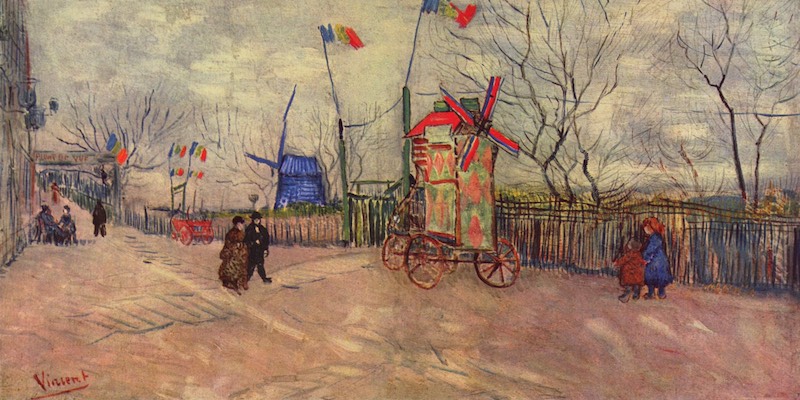 A Montmartre village scene by van Gogh from his early days in Paris
A Montmartre village scene by van Gogh from his early days in Paris
Vincent Van Gogh's life was short (he killed himself at age 36) and his time in Paris was even shorter, only two years. But it was during his time here that he was exposed to French artists, including the Impressionists and their followers. His style moved away from the somber tones of the Dutch Old Masters to the brighter, more colorful paintings that he is now famous for.
Montmartre in the 1880s wasn't the postcard version we know today — it was mostly windmills, vegetable plots, and the occasional rowdy cabaret. Van Gogh lived in a cramped flat with his brother Theo and soaked up the Paris art scene like raw canvas: Japanese woodcuts, pointillism, café gossip, and all. Let's go up the hill to Montmartre to see where he lived and what he painted in Paris.
![]()
|
Escape to the Land of Bubbly on a small-group day tour from Paris. Taste at top Champagne houses, meet boutique producers, enjoy a leisurely lunch, and toast to a perfectly sparkling day. |
|
Escape to the Land of Bubbly on a small-group day tour from Paris. Taste at top Champagne houses, meet boutique producers, enjoy a leisurely lunch, and toast to a perfectly sparkling day. |
Paris Facts – The World's Healthiest City to Visit
 A Parisienne shops at a market on Rue Poncelet, photo by Mark Craft
A Parisienne shops at a market on Rue Poncelet, photo by Mark Craft
Already the top destination for landmarks, culture, museums, and food, Paris has added another distinction, and another reason to come back time and time again. International travel organization TravelSupermarket named Paris the top healthy destination city, beating out not only all other world capitals but Vancouver, Miami, and San Francisco.
It turns out that long walks, fresh produce, excellent tap water, and an abundance of parks really do add up. With its short distances, reliable public transport, and a national tendency to avoid snacking between meals, Paris quietly excels in all the metrics that make a city good for your body as well as your brain. Let's take a look at the data and why Paris came out on top.
The History of Paris
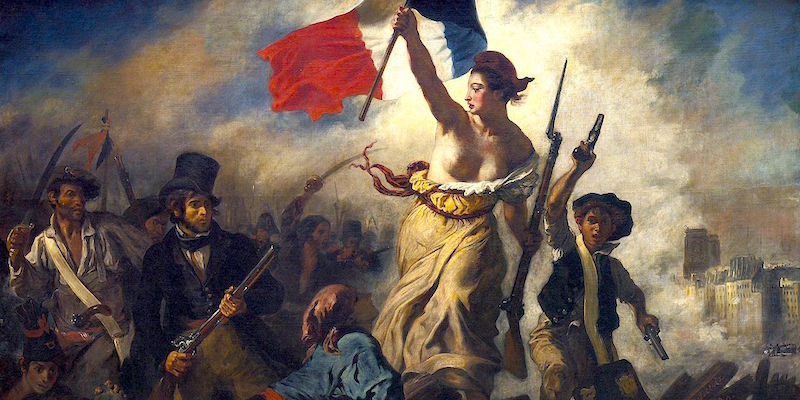 Delacroix's "Liberty Leading the People"
Delacroix's "Liberty Leading the People"
The first settlement at what is now Paris was founded over 2,300 years ago. The first Parisiens were the Parisii, the Celtic people who were the original settlers. They were followed by the Romans, and then there were Franks and Gauls and the Vikings and a lot of other people.
It's hard to take ten steps in Paris without bumping into a remnant of one of these eras — a Roman arena here, a medieval tower there. The layers of history stack up so neatly that even seasoned visitors are still uncovering new details. Some of the most overlooked Paris facts are written right into the street names and metro stations. Vikings? Learn more in our 3-part biography of the City of Light.
![]()
Our Top-Rated Paris Experiences
Sites of the Paris Commune Of 1871
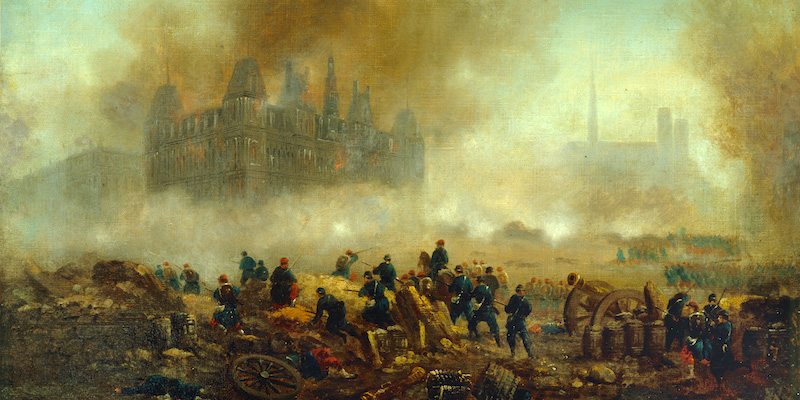 A painting of the Hotel de Ville burning during the Paris Commune Of 1871
A painting of the Hotel de Ville burning during the Paris Commune Of 1871
The Franco-Russian War of 1870 was one of the the most useless and foolish wars in the history of France. At the end of its short duration Emperor Napoleon III had fled the country, leaving Paris in a shambolic state. In the resulting political power vacuum a spontaneous radical, socialist, and anti-religious republic was established in the city called the Paris Commune.
Let's explore this brief (two months), turbulent chapter in the life of the city by visiting some of the historic sites of this revolutionary and bloody period.
The Shocking History of the 16 Mayors of Paris
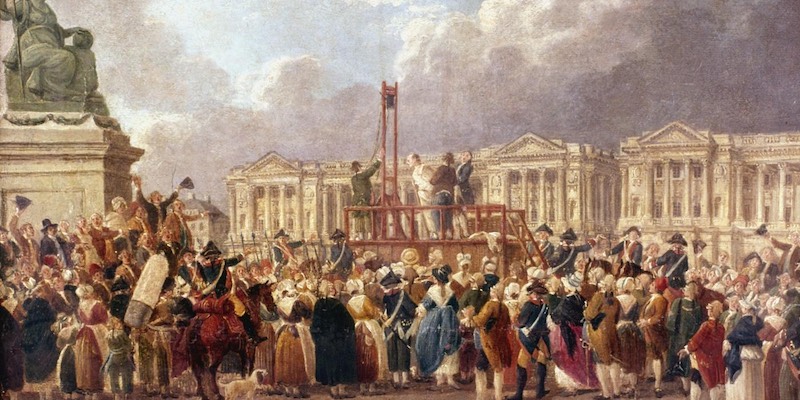 Another one bites the dust: a Paris mayor at the guillotine
Another one bites the dust: a Paris mayor at the guillotine
Paris didn't have a mayor until the Revolution — but that experiment only lasted 5 years. There have been long gaps of time without mayors, and the mayors Paris did have came and went… via the guillotine or being eaten by wolves. It's (seemingly) a tough job, but these 16 people have stepped up. Let's take a look at the highs and lows of the mayors of Paris through the centuries.
The Unsung Hero Of Paris Modernization
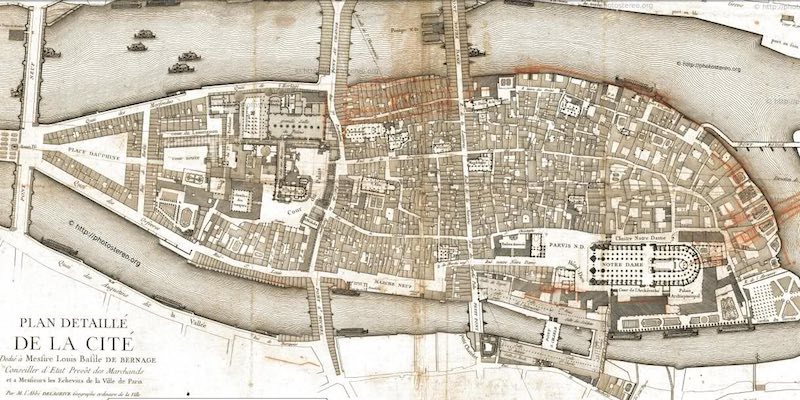 Paris map of 1754, before modernization began
Paris map of 1754, before modernization began
How did Paris change from a jumbled medieval city into a modern wonder in the 19th century? You may know about the work undertaken by Napoleon III and his prefect Baron Haussmann who, starting in the 1850s, created broad boulevards, an improved sewer & water system, and thousands of hectares of new parks — turning Paris into a fabled City of Light.
But you may not know about the city planner who started it all, Claude-Philibert Rambuteau, who, under France's last king, took the first steps towards transforming Paris into a modern space, starting back in 1833. Let's take a look at his fascinating story.
![]()
|
From Paris to Provence, Burgundy to Bordeaux, find hotel deals with current sale prices. Save up to 20% in cities, villages, beach towns, and storybook countryside escapes. |
|
Discover today's sale prices on hotel rooms in every village & city in France. Save up to 20%. Find hotels in Paris, Burgundy, Provence, the Loire Valley, Normandy, and everywhere else! |
The Paris Exposition of 1900
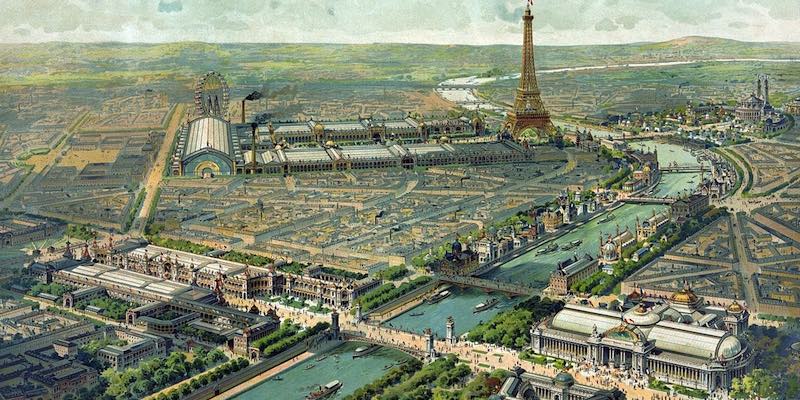 View of the Paris Exposition of 1900; the Eiffel Tower was the star of the 1889 Exposition
View of the Paris Exposition of 1900; the Eiffel Tower was the star of the 1889 Exposition
It was the biggest world's fair ever. The Paris Exposition of 1900 covered 543 acres and featured 83,000 exhibitors. Fifty millions visitors saw the marvels of the new century — talking pictures, electricity, the Paris Metro, Gare de Lyon, the 1900 Olympic games, and even the premier of matryoshkas, those Russian nesting dolls.
It wasn't just a showcase — it was a declaration that Paris was the capital of modernity. Art Nouveau took center stage, the moving sidewalk made its debut, and electric street lighting dazzled the crowds. Among the lesser-known Paris facts: escalators caused such a stir they were practically considered magic. The city came out of the 19th century not just glowing, but electrified.
Nine Highlights Of The Paris Universal Expositions
The exposition of 1900 wasn't the only world's fair held in Paris. In fact, there were eight Paris Expositions Universelles staged between 1855 and 1937, and each one showcased recent inventions or innovations or artistic & design trends. Many of the ideas that first appeared at the Paris Universal Expositions have changed our world.
Gustave Eiffel's tower? Born of the 1889 exposition. Art Nouveau? First made waves in 1900. You can even thank one fair for introducing the public to electric lighting — and another for the diesel engine. These Paris facts don't just make for good trivia; they explain why the city's skyline, streetlamps, and design DNA still echo innovation. Come with us on a time-traveling adventure to look at nine of the fairs.
Herbin Fine Ink – Writing Tools of the Masters
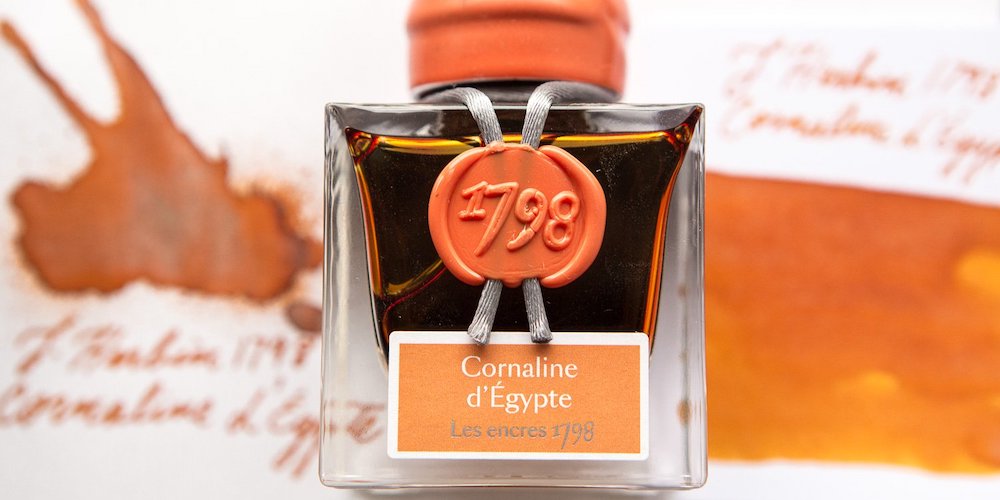 Cornaline d'Egypte, a luxury ink from Herbin
Cornaline d'Egypte, a luxury ink from Herbin
In 1670 an adventurous French sailor named Jacques Herbin brought back ideas and ingredients from India to create his first sealing wax. A few years later, Herbin introduced fine writing inks that became the go-to tool for emperors, writers, and calligraphers. 350 years later the company remains a Paris institution.
![]()
|
D-Day Beaches Day Trip from Paris Take a powerful day trip from Paris to Normandy’s D-Day beaches. Walk the sands; visit key landing sites, museums, and cemeteries; and honor the heroes who changed the course of history. |
|
D-Day Beaches Day Trip from Paris Take a powerful day trip from Paris to Normandy’s D-Day beaches. Walk the sands; visit key landing sites, museums, and cemeteries; and honor the heroes who changed the course of history. |
The Paris Bus System – 500 Years Of History
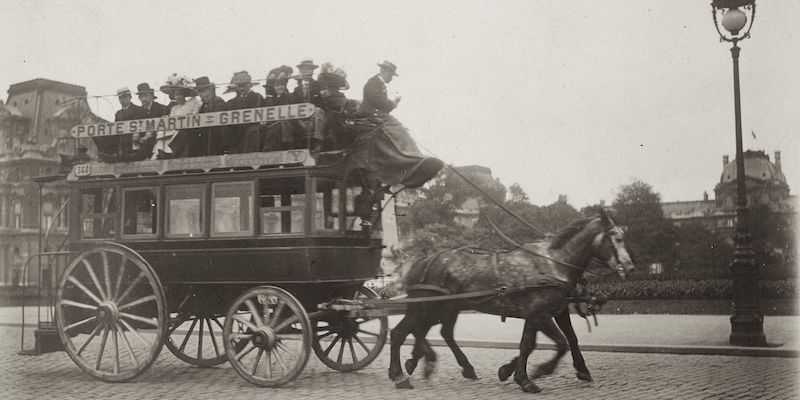 An omnibus carrying passengers in 19th-century Paris
An omnibus carrying passengers in 19th-century Paris
We love riding the Paris buses — they're a great way to get around while seeing the best of the city. Predecessors of the Paris city bus system date back five hundred years, to Louis XI and the intercity Royal Postal Service transportation system. Two hundred years later Louis XIV, AKA The Sun King, instituted the first Paris intramural public coach company.
The bus system has run on horse power, steam (a failure), gasoline and diesel, but plans are now in place to replace all fossil-fuel buses with more environmentally-friendly options by 2025. We'll save you a seat on the electric bus. Meanwhile, read the fascinating history of the Paris bus system in thirteen easy chapters!
Tour Montparnasse & Its Makeover
 Tour Montparnasse looms above Paris, photo by Mark Craft
Tour Montparnasse looms above Paris, photo by Mark Craft
Jutting up into the sky far above the rest of Paris, the blocky skyscraper Tour Montparnasse is the most incongruous element on the Paris skyline. It's been heartily disliked by Parisians and visitors alike since it was opened in 1973 — so much so that planning bylaws were put in place prohibiting any other skyscrapers to be built in central Paris.
Tour Montparnasse is now undergoing a makeover to modernize it and bring it up to new green standards. But, will this expensive renovation change anyone's opinion of the tower? Let's look at the past, present, and future of this building.
![]()
|
Skip the famously long lines and head straight to the top of the Eiffel Tower. With a guide to lead the way, you'll be taking in the panoramic views while everyone else is still waiting below. |
|
Skip the famously long lines and head straight to the top of the Eiffel Tower. With a guide to lead the way, you'll be taking in the panoramic views while everyone else is still waiting below. |
Paris Movies
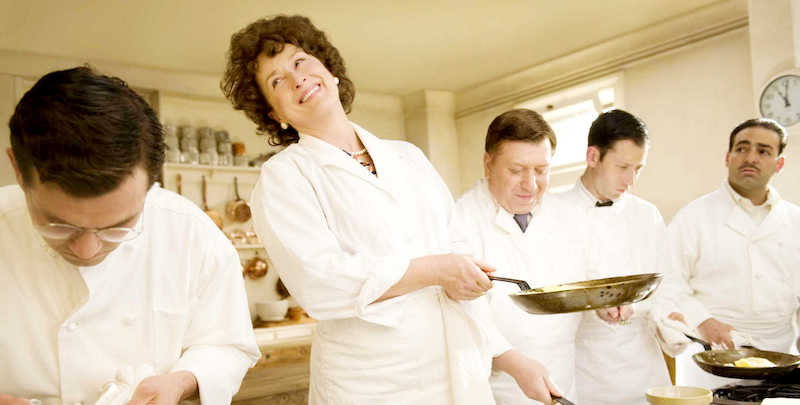 Merle Streep as Julia Child in one of our favorite Paris movies
Merle Streep as Julia Child in one of our favorite Paris movies
Can't make it to Paris this year? Want more of Paris once you get home? We find the movies can be the next best thing to being there. We've built our own library of favorite Paris movies, and it's a wonderful way to rekindle our memories of the City of Cinema — or to get us in the mood for our next trip!
Read our guide to classic Paris movies to help pass the time until you next make it across the Atlantic.
![]()
Paris Movies Quick Links
We'll Always Have Paris… Books
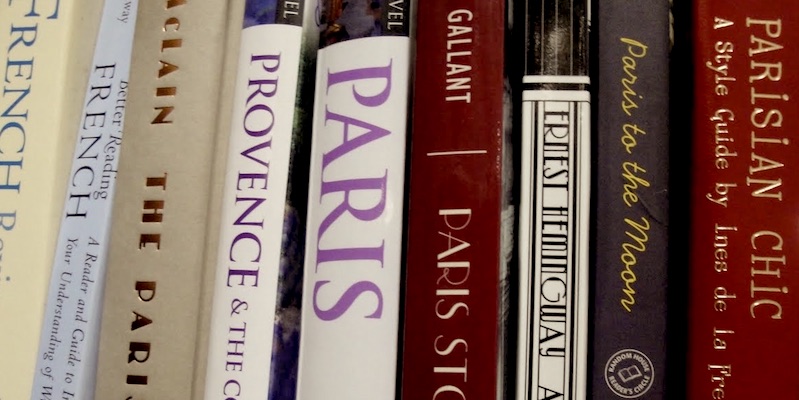 Shelf full of books about Paris… and Provence!
Shelf full of books about Paris… and Provence!
When we're not in Paris we're reading about Paris. Sometimes we grab an old favorite from the bookshelf, but we really like to dig into new books about Paris and France. So, go visit our Paris book page, where we review some of the nicest books about the city. Think of it as the City of Light Book Club. In addition to those in the linked article, here are a couple of recent reviews —
The Population of Paris
 A graph showing the rise and fall of Paris population over 2000 years
A graph showing the rise and fall of Paris population over 2000 years
Since it was founded as Lutetia, the population of Paris has grown from a couple of thousand Gauls to over two million Parisians, and has gone up and down over the centuries. Find out when Paris was even more densely populated than it is now. Do you know the current population?
![]()
|
Browse our hand-picked Paris hotel deals with real-time discounts of up to 20%. Stay in the Marais, Saint Germain, the Latin Quarter, the Left Bank near the Eiffel Tower… every arrondissement is on the list. |
|
Browse our hand-picked Paris hotel deals with real-time discounts of up to 20%. Stay in the Marais, Saint Germain, the Latin Quarter, the Left Bank near the Eiffel Tower… every arrondissement is on the list. |
Paris Facts – Climate in Paris
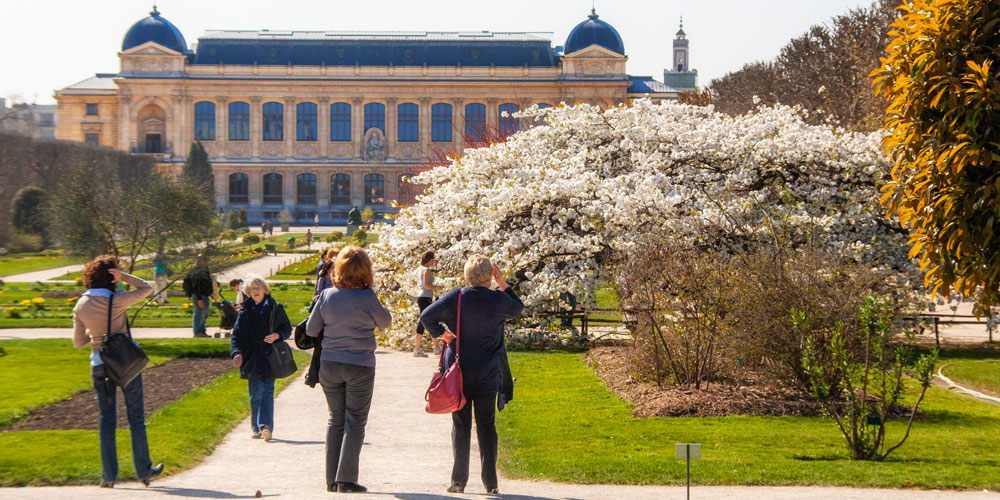 Springtime in Paris means white blossoms in Jardin des Plantes
Springtime in Paris means white blossoms in Jardin des Plantes
It's nice to know what weather to expect on your arrival in Paris. We can't predict anything for certain, and the climate in Paris can be quite temperamental (pun intended) but we can make a good guess about what it's going to be like at the time of year you arrive. Learn about the Paris seasons and weather patterns to help plan your trip.
Canadian & US Embassies in Paris
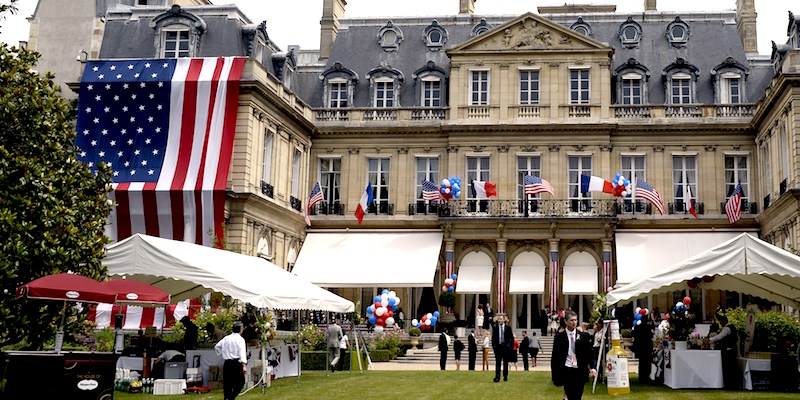 The US Embassy in Paris during a July 4 celebration
The US Embassy in Paris during a July 4 celebration
The only time you're ever likely to need an embassy is if your passport has been lost or stolen or if you have become stranded. In case of emergencies like these help is at hand in Paris for US and Canadian citizens at their respective embassies.
Both embassies are located near the Champs-Élysées, within easy reach by Metro or taxi — which is good news if you're having a particularly bad day. From consular services to emergency passports, they're your official lifeline. One of those quietly useful Paris facts: while embassies close for local French holidays, they also close for national holidays back home — so don't show up on July 4th waving a form.
![]()
|
Skip the long lines and dive into the Louvre’s greatest hits — the Mona Lisa, Venus de Milo, and more — on a guided tour that shows you the treasures without the museum overload. |
|
Skip the long lines and dive into the Louvre’s greatest hits — the Mona Lisa, Venus de Milo, and more — on a guided tour that shows you the treasures without the museum overload. |
